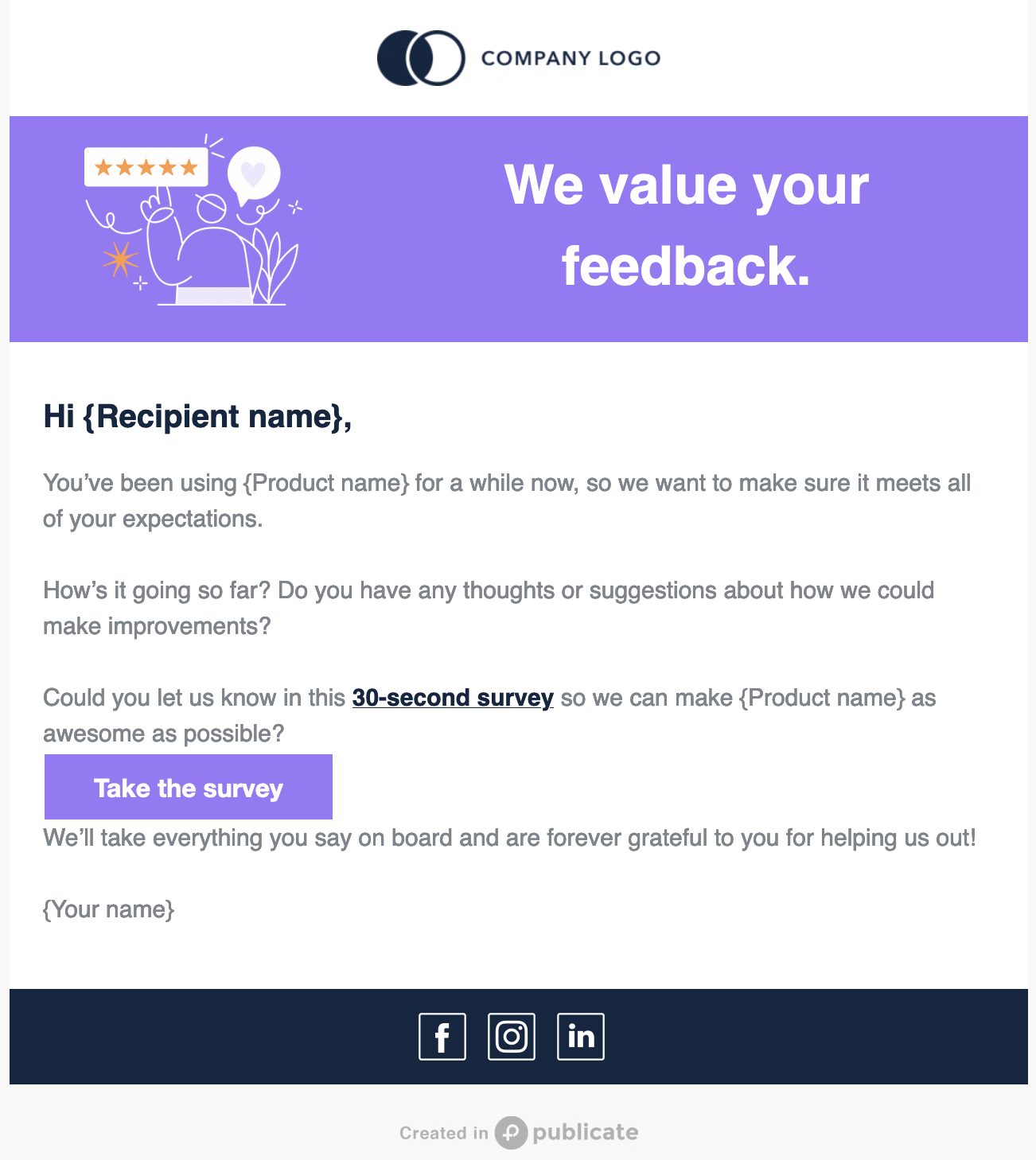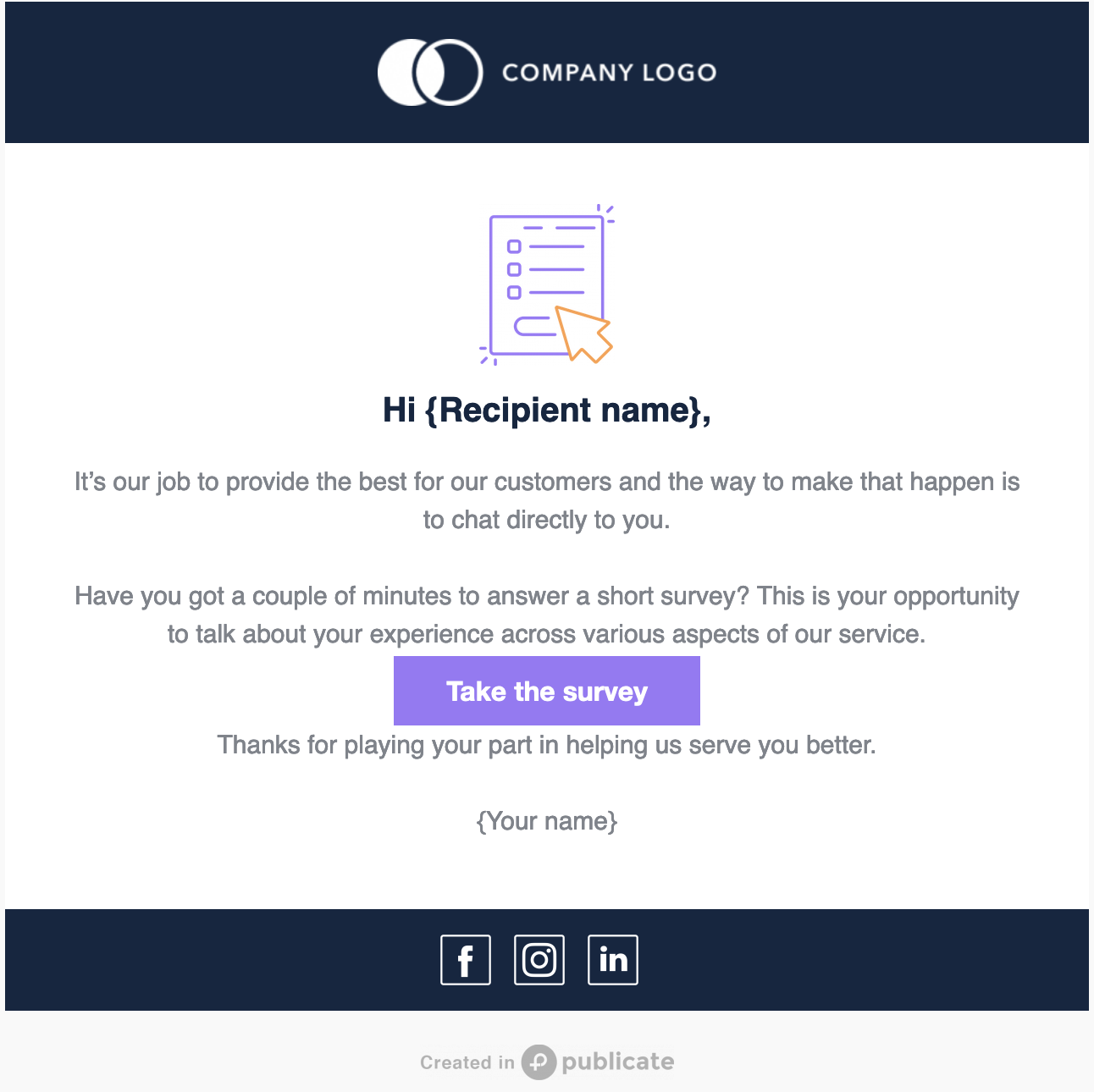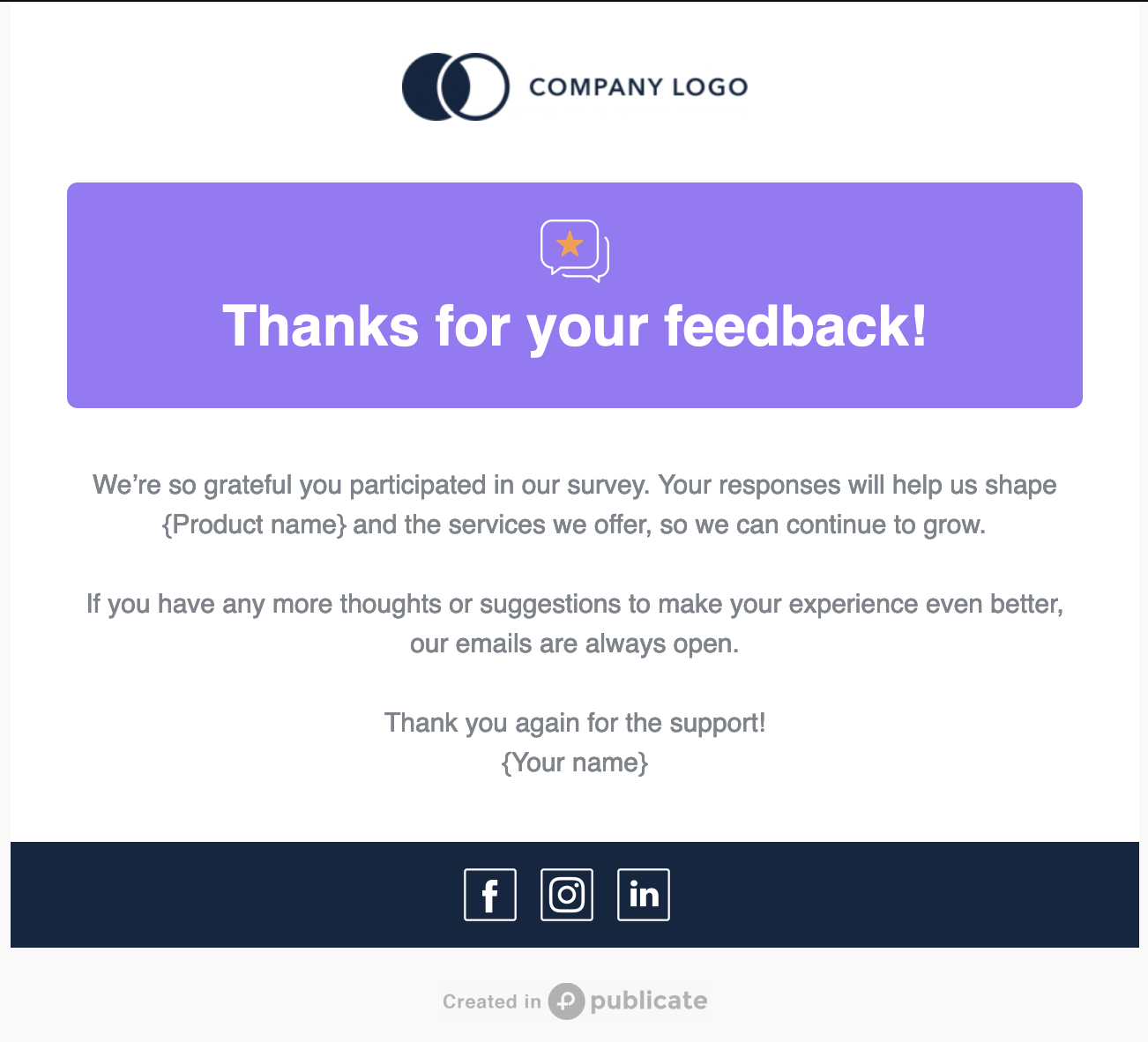What do your customers really think? The best way to find out is to simply email them and ask. A customer feedback email template is the fastest and most efficient way to gather intel on your products and services from the people who count.
This guide has everything you need to access that all-important feedback in a way that’s simple and hassle-free for your customers.
A customer feedback email is simply an email sent to a group of customers to get their opinion about a product, service or overall experience with a business. It’s a useful tool to discover what you’re doing well and what areas could be improved, in the eyes of your customers.
There are a few ways you can gather feedback:

Customer feedback is an opportunity to improve your services to keep customers coming back and attract new ones.
By collecting valuable feedback from the people who use your products, you can nurture relationships and adjust your services based on what customers really need and want. This takes away the guesswork (and wasted time and budget) in product development.
Ultimately, a customer feedback email is an often-overlooked tool to help you make business decisions and shape the future of your brand.
There are some guidelines we use every time we write a customer feedback email. The following 4 golden rules will keep your reader interested, engaged and (fingers crossed!) motivated to share their opinion with you.
Clarity and honesty always win. A good newsletter opening message clearly states the purpose of your email. Explain that you’re contacting the customer to get their opinion, and don’t muddy the opening message with complex language or sales techniques.
Remove distracting elements and trim your feedback email down to need-to-have content only. Follow a clean customer feedback email template, and don’t overdo it on images, gifs and other items.
Luckily, you don’t have to be armed with any design skills to create engaging, beautiful emails. Use a drag-and-drop email template builder that does the heavy lifting for you. Save time and easily design professional emails and export them to any email service provider to send well-designed emails at scale.
It’s natural to want to cram details into our emails, but superfluous information can impact conversion rate. Keep the body copy brief and engaging, making sure it stays focused on the ultimate call to action: Tell us what you think!
An attention-grabbing subject line encourages opens, but personality in the body copy keeps readers engaged. Bring your brand voice into the email and make it enjoyable to read.
We hear statements like “We want your feedback” and “Tell us what you think” so often that writing them in feedback emails feels natural. However, watch out for these kinds of statements because they can seem demanding.
Instead, be polite and position the feedback request as an option - not an obligation - for the recipient.
Top tip: Include a benefit that motivates the reader to respond. While this might be a discount or voucher, the benefit doesn’t have to be monetary. Instead, you can overcome objections by explaining that the survey takes just x minutes to complete or say how the survey is helping to improve your service.
The best customer feedback examples include 6 key elements. Get each one right to maximize your response rate.
Write a subject line they can’t resist clicking on. Raise curiosity and, if word count allows, include a benefit in the subject line.
Your email should feel like a one-on-one conversation. Use the recipient’s name and refer to their recent purchase where possible.
From the outset of your email, state why you’re contacting the customer and what you hope to achieve by getting their feedback.
Your customers are busy. Keep your email short and sweet while making sure it’s friendly, personable and persuasive.
Mention how grateful you are to the customer for taking the time to share their thoughts, and reiterate how the process will help make your product or service the best it can be.
Make it easy for the reader to provide feedback. Whether you’re using a scoring technique, a form, or a simple ‘Reply and tell us what you think’, there should be no friction in the process or you risk losing their interest.

An email template makes it quick and easy to collect valuable customer feedback. For the design, you could start with a free Gmail newsletter template. For the copy, we’ve written up 6 customer feedback example emails.
You can use an email builder to make the whole process a breeze. The fastest way to build emails without coding or design knowledge, email builders let you create engaging emails and track their performance.
You can access a variety of design templates within the platform. Simply choose the most suitable one, copy and paste the text from the following 6 example emails, and customize the text to suit your business, product or service.
The following templates are for inspiration - you might need to make some changes based on the circumstance and the reader’s stage in the buyer journey.
We’ve included a survey link in these templates but as discussed, you can also gather feedback by asking readers to reply to the email, or even by embedding a sliding scale into the email body.
A basic template to gather feedback about a customer’s overall experience with your business. Consider elevating this with a voucher or discount code to encourage more responses.

A feedback email template based on employee interactions. You can use this to follow up on an interaction with your customer service team. Was the problem resolved? Could anything have been done better?

Find out how your product performed in the hands of your customers. This knowledge is the ticket to refining and improving what you offer.

Get insights across the board for a 360-degree view of customer satisfaction. This survey tends to be more in-depth but it opens plenty of opportunities for your customers to share their honest thoughts.

Make the most of a happy customer. When something goes well, don’t forget to email the customer to ask for a written testimonial. You can use this on your website, social media channels and case studies as social proof to potential new customers.

Say thank you when a customer shares their feedback. This solidifies that the survey was worth their time, confirming that their feedback is important and that you’ll act on it

Your customers don’t want to feel as if they’re shouting their thoughts and feelings into a black hole. That’s why it’s important to always respond to feedback (even if it’s with an automated message).
Be authentic in your response. Thank the customer to show you appreciate their contribution, whether their feedback was positive or negative.
Top tip: Spend extra time responding to negative feedback. Avoid becoming defensive or giving excuses. Instead, promise to act upon the insights and consider offering to call the customer if they have an unresolved issue.
It’s time to put your insights into action. Gather the intel from your customer feedback emails and use it to power the future of your business.
With a simple email template (or multiple templates!), gathering feedback becomes an ingrained part of your processes. So, your business can always be improving.
An email builder lets you do this seamlessly. An effective tool for business growth, you can create survey emails often, quickly and affordably. With designs that maximize engagement, and analytics that let you track performance, it couldn’t be easier to collect that all-important feedback.
With hundreds of beautifully designed email templates ready to go, you can send professional emails in a flash. Just customize the customer feedback email template with your content, export it to your chosen email service provider such as Gmail or Outlook, and then send those feedback requests!